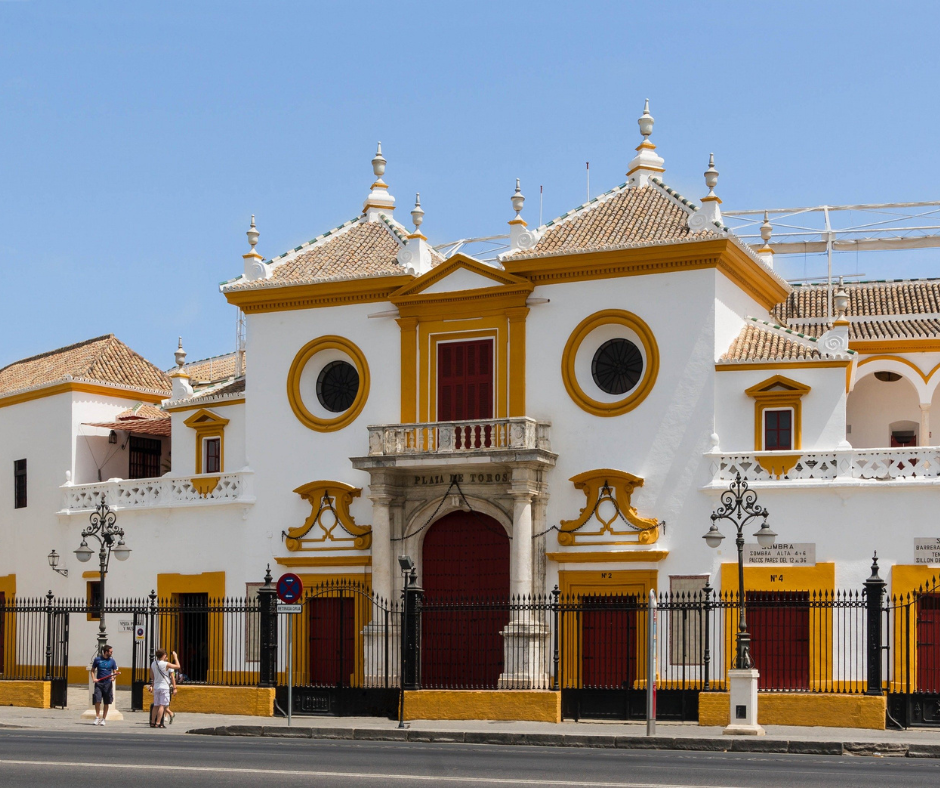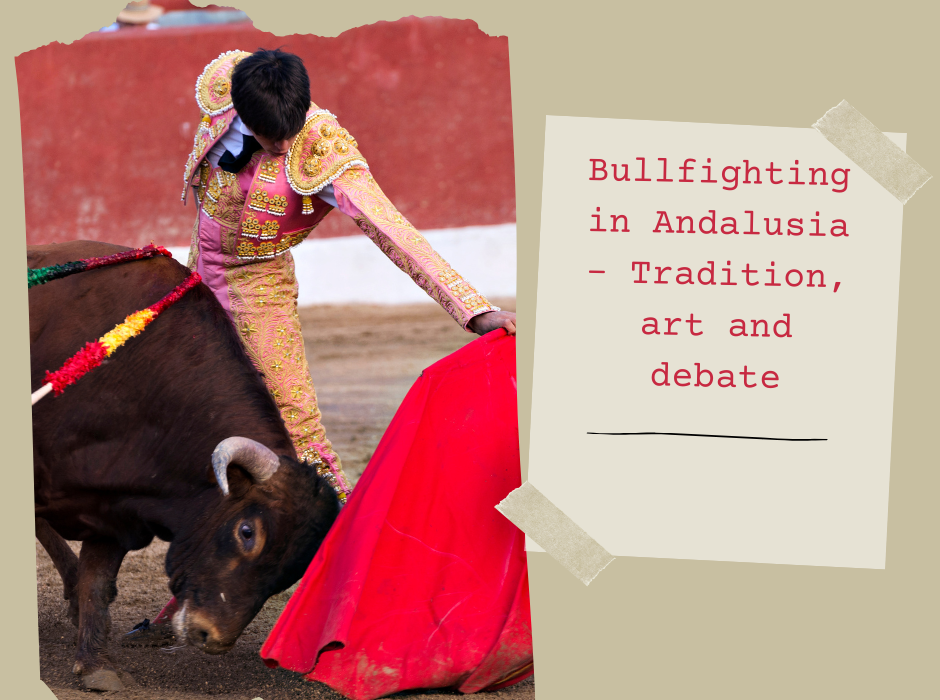Bullfighting, or corrida de toros in Spanish, is one of Andalusia’s oldest and most controversial traditions. This spectacular yet widely debated event is deeply rooted in the region’s history and culture. Andalusian cities such as Seville, Ronda, Málaga, and Córdoba are famous for their bullfighting arenas, where these unique ceremonies have taken place for centuries.

Did you know? Andalusia is the homeland of bullfighting, with more than seventy registered bullfighting arenas. In Málaga province, the Plaza de Ronda, located in Ronda, is the oldest arena, having opened in 1785, with a capacity for 6,000 spectators.
The History of Bullfighting in Andalusia
The tradition of bullfighting on the Iberian Peninsula dates back more than a thousand years, but its modern form developed in the 18th century. Andalusia played a particularly significant role in the evolution of the corrida, as the foundations of modern bullfighting were laid by Francisco Romero, a matador from the city of Ronda.
Originally, bullfighting was a pastime of the aristocracy, conducted on horseback, but it gradually evolved into a fight performed on foot. The Real Maestranza de Caballería de Sevilla arena, one of the oldest and most important in Spain, remains a central venue for bullfighting to this day.
Famous Bullfighting Arenas in Andalusia
Plaza de Toros de la Maestranza (Seville) – One of Spain’s most famous and beautiful bullfighting arenas, hosting the prestigious Feria de Abril bullfighting series every spring.


Plaza de Toros de Ronda – Considered the birthplace of modern bullfighting, this arena was built in 1785 and is one of the most historically significant sites in Spanish bullfighting. The bullfighting style known today was developed here.

Plaza de Toros de Málaga – One of the largest arenas in Andalusia, known for hosting spectacular events during the Feria de Málaga in August.

Plaza de Toros de Córdoba – Famous not only for its bullfights but also for being the stage where Manuel Benítez “El Cordobés,” one of the 20th century’s most iconic matadores, performed.
The Structure of a Bullfight
A bullfight is a ritualistic event with strict rules, consisting of three main stages:
El tercio de varas – The matador and his assistants present the bull while picadores (mounted bullfighters) wound the animal with lances.

El tercio de banderillas – The placement of banderillas (decorative, needle-like barbed sticks) in the bull’s neck, further intensifying its aggression.

El tercio de muerte – The final confrontation, where the matador, using his famous red cape (muleta), maneuvers the bull before delivering a precise sword thrust to end the fight.

The Social and Cultural Role of Bullfighting
Supporters of bullfighting argue that it is not merely a sport but an artistic and cultural expression that celebrates the skill and bravery of the matador. For many, it represents an integral part of Spanish tradition, symbolizing the meeting of past and present. The corrida holds a special place in Andalusian festivities, such as the Feria de Abril in Seville or the Feria de Málaga.

However, in modern times, bullfighting is highly controversial. Animal rights activists and advocates argue that it is a cruel and outdated tradition with no place in contemporary society. As a result, bullfights have been banned in several Spanish regions, including Catalonia and the Canary Islands. In Andalusia, however, bullfighting remains a strong tradition, with hundreds of events held annually across various venues.
Bullfighting is one of Andalusia’s oldest and most debated cultural phenomena. While many still consider it an essential part of Spanish identity and art, an increasing societal debate questions its legitimacy. Regardless, bullfighting remains deeply embedded in the region’s history, and for those who wish to understand Andalusian traditions, it is essential to learn about this practice—whether by visiting a bullfighting arena, a museum, or engaging in local discussions.


